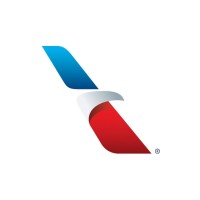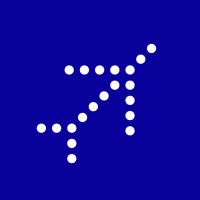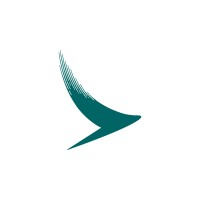Company Cyber Security Posture
NANA
NA Company Details
NA
NA
NA
NA
NA
NA
Scan still pending
NA
NA
Between 200 and 800
This score is AI-generated and less favored by cyber insurers, who prefer the TPRM score.
 NA Global Score
NA Global Score.png)

Company Scoring based on AI Models
| Model Name | Date | Description | Current Score Difference | Score |
|---|---|---|---|---|
| AVERAGE-Industry | 03-12-2025 | This score represents the average cybersecurity rating of companies already scanned within the same industry. It provides a benchmark to compare an individual company's security posture against its industry peers. | N/A | Between 200 and 800 |
Company Cyber Security News & History
| Entity | Type | Severity | Impact | Seen | Url ID | Details | View |
|---|
Company Subsidiaries

NA
Access Data Using Our API

Get company history
.png)
NA Cyber Security News
US says ‘Salt Typhoon’ Chinese hacking group behind major metadata theft
Chinese hackers have stolen the metadata of a large number of Americans in a wide-ranging cyber-espionage campaign that has targeted at least eight United ...
Drone Cargo Delivery Expands into Australia; New Acquisition
The vertiport is expected to facilitate last-mile maritime freight deliveries, with air delivery being a specialty of Skyports Drone Services.
A First in Europe: Groupe ADP Purchases Four Oshkosh Striker Volterra Electric ARFF Vehicles
None
Car Dealerships Nationwide Hit by Massive Cyberattack—Hackers Demand Multimillion-Dollar Ransom
Software provider CDK Global was hacked, leaving dealership customers to wonder if they will get service and if their data was stolen.
The 19 Largest Global Startup Funding Rounds of April 2024
Founded by Amiad Soto and Koby Soto in 2013, Guesty has now raised a total of $409.4M in total equity funding and is backed by Inovia Capital, Vertex Ventures, ...
OYO strengthens focus on information security; develops a comprehensive Bug Bounty program
OYO Hotels & Homes, the world's leading hospitality chain announced that it will continue to ramp up efforts to improve its information security framework.

NA Similar Companies

dhmi
Türkiye Havaalanlarının işletilmesi ile Türkiye Hava sahasındaki hava trafiğinin düzenlenmesi ve kontrolü görevi, Devlet Hava Meydanları İşletmesi(DHMİ) Genel Müdürlüğünce yerine getirilmektedir. Türk Sivil Havacılık sektörünün altyapısını oluşturan tesis ve donanımıyla, 1933 yılından bu yana değ

American Airlines
Embark on an adventure with a commitment to service, excellence and humanity. Our team is what powers our airline. We are proudly dedicated to our purpose of caring for people on life’s journey, including connecting our customers to the people and places they love or providing our team members devel

gategroup
gategroup is the global leader in airline catering, retail-on-board and hospitality products and services. gategroup provides passengers with superior culinary and retail experiences, leveraging innovation and advanced technology solutions. Headquartered in Zurich, Switzerland, gategroup delivers op

Air China Cargo
Is a cargo airline with its headquarters in Shunyi District, Beijing, China t is an all-cargo subsidiary of Air China and operates services to 36 cities in 27 countries around the world. Its main base is Beijing Capital International Airport. The airline was established on 12 December 2003 and start

IndiGo (InterGlobe Aviation Ltd)
How time flies. #18YearsOfIndiGo IndiGo is India’s largest passenger airline. We primarily operate in India’s domestic air travel market as a low-cost carrier with focus on our three pillars – offering low fares, being on-time and delivering a courteous and hassle-free experience. IndiGo has become

Cathay Pacific
Welcome to the official Cathay Pacific LinkedIn page. We have over 200 destinations in our global network, but want to do more than just move you from A to B. We want to take you further in your journey, and ultimately, to move beyond. And we’re here to do what we can to help you discover what’s nex

Frequently Asked Questions
Explore insights on cybersecurity incidents, risk posture, and Rankiteo's assessments.
NA CyberSecurity History Information
How many cyber incidents has NA faced?
Total Incidents: According to Rankiteo, NA has faced 0 incidents in the past.
What types of cybersecurity incidents have occurred at NA?
Incident Types: The types of cybersecurity incidents that have occurred include .
Additional Questions
What Do We Measure?
















Every week, Rankiteo analyzes billions of signals to give organizations a sharper, faster view of emerging risks. With deeper, more actionable intelligence at their fingertips, security teams can outpace threat actors, respond instantly to Zero-Day attacks, and dramatically shrink their risk exposure window.
These are some of the factors we use to calculate the overall score:
Identify exposed access points, detect misconfigured SSL certificates, and uncover vulnerabilities across the network infrastructure.
Gain visibility into the software components used within an organization to detect vulnerabilities, manage risk, and ensure supply chain security.
Monitor and manage all IT assets and their configurations to ensure accurate, real-time visibility across the company's technology environment.
Leverage real-time insights on active threats, malware campaigns, and emerging vulnerabilities to proactively defend against evolving cyberattacks.




